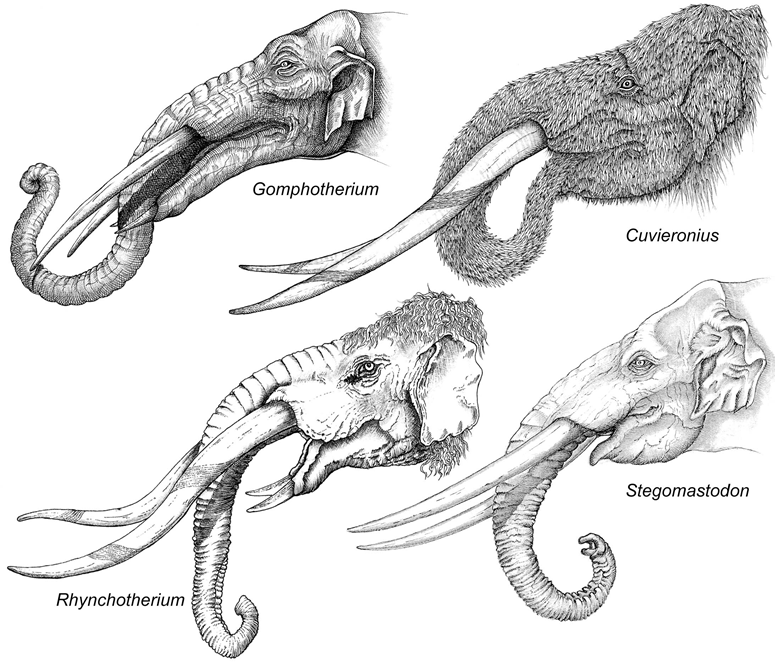A cemetery of gomphotheres, an extinct cousin of the elephant, discovered in the United States

During paleontological excavations, bones of a species related to elephants were discovered, neither in Asia nor in Africa but in the United States.
As everyone knows, elephants are divided into three species. In Africa, we find the African forest elephant, and its slightly more massive cousin, the African savannah elephant. While in Asia, we find the aptly named Asian elephant, recognizable by its smaller ears. But how could an elephant cemetery be discovered in a completely different continent? We will explain everything to you.

The gomphothere, this extinct cousin of the elephant
Strictly speaking, it was not elephant fossils that were discovered, but rather gomphothere fossils. We told you about it in a previous article, this extinct family was distinguished from our current elephants by… its tusks.
Indeed, the gomphothere had 4 tusks, and not 2 like the elephant or the mammoth. For the rest, it was very similar to our pachyderm: it was also imposing and also had a trunk. Before disappearing, the gomphothere spread across Europe, Asia and also… the United States.

Hordes of gomphotheres discovered at the bottom of an ancient river
This is how a team of paleontologists was able to find gomphothere fossils near Gainesville, Florida. These 500,000 year old fossils were discovered on the banks of an ancient river. According to the Florida Museum, an impressive number of bones were found at the site.
In a press release, the Florida Museum explains: “After a few days, it turned out that there was not one but several complete skeletons, including one adult and at least seven juveniles.”
Could hordes of gomphotheres have been allowed to die here precisely? According to the researchers, if the site does indeed resemble an elephant cemetery, “It appears that members of one or more herds were stranded in this location at different times.”
Half a million years ago, this place was much wilder and much less hospitable. Herds would therefore have lost their lives by getting stuck near or in this river.
Source: websites

